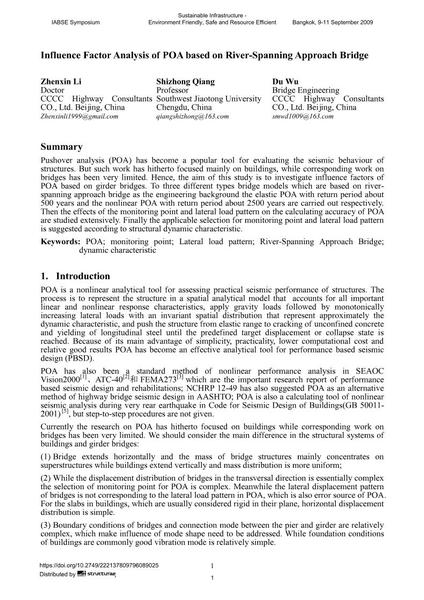Influence Factor Analysis of POA based on River-Spanning Approach Bridge

|
|
|||||||||||
Bibliographic Details
| Author(s): |
Zhenxin Li
Shizhong Qiang Du Wu |
||||
|---|---|---|---|---|---|
| Medium: | conference paper | ||||
| Language(s): | English | ||||
| Conference: | IABSE Symposium: Sustainable Infrastructure - Environment Friendly, Safe and Resource Efficient, Bangkok, Thailand, 9-11 September 2009 | ||||
| Published in: | IABSE Symposium Bangkok 2009 | ||||
|
|||||
| Page(s): | 76-85 | ||||
| Total no. of pages: | 10 | ||||
| Year: | 2009 | ||||
| DOI: | 10.2749/222137809796089025 | ||||
| Abstract: |
Pushover analysis (POA) has become a popular tool for evaluating the seismic behaviour of structures. But such work has hitherto focused mainly on buildings, while corresponding work on bridges has been very limited. Hence, the aim of this study is to investigate influence factors of POA based on girder bridges. To three different types bridge models which are based on river- spanning approach bridge as the engineering background the elastic POA with return period about 500 years and the nonlinear POA with return period about 2500 years are carried out respectively. Then the effects of the monitoring point and lateral load pattern on the calculating accuracy of POA are studied extensively. Finally the applicable selection for monitoring point and lateral load pattern is suggested according to structural dynamic characteristic. |
||||
| Keywords: |
POA monitoring point Lateral load pattern River-Spanning Approach Bridge dynamic characteristic
|
||||
